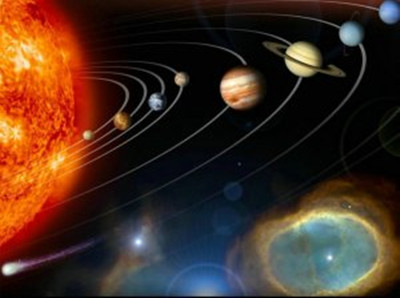(单词翻译:单击)
You can see the planet Jupiter on a clear night, but Jupiter is humongous.
在晴朗的夜空下我们能够看到木星,那是因为木星够大;
Mars and Mercury are smaller than that, and you can see them, too.
尽管火星和水星比木星要小,但我们依然能看到。
Wait a minute, our moon is even smaller, and you can see that.
等等,月球更要小一些,我们还是能看到。
Could anything smaller than the moon be visible without a telescope?
那么,在不使用望远镜的情况下,我们还能看到比月亮更小的天体吗?
Actually, yes.
事实上,答案是肯定的。

Though it takes a lot of patience and excellent sky conditions, it is possible to see a tiny object called Vesta.
只要我们足够有耐心,天公也作美,我们还有机会看到一个小天体—它就是被命名为灶神星的小天体。
Although it had a molten interior and volcanoes, Vesta isn't a planet or a moon:
尽管它以溶化的金属为核心且地表遍布火山,灶神星却既不是行星也不是月球:
it's an asteroid.
它仅仅是一颗小行星。
Asteroids are stray chunks of rocky or metallic materials that orbit the sun but were never drawn into any of the planets.
小行星是由岩石或是金属块构成的小天体,他们绕太阳运动但绝不会卷入其他行星的运行轨道中。


